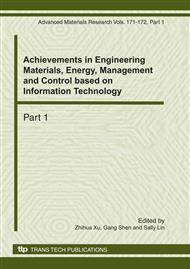p.315
p.319
p.323
p.329
p.333
p.337
p.342
p.346
p.350
Experimental Study on Solidification Behavior of Carbon Nanotube Nanofluid
Abstract:
Carbon nanotube (CNT) nanofluids, with three sizes of CNTs (L-MWNT-1030, L-MWNT-4060, L-MWNT-60100) and different mass concentration (MC) of surfactant, were prepared to investigate the effects of CNTs and surfactant on the solidification behavior of deionized water (DI water). The thermal responses of the samples were tested in a constant temperature trough. It’s found that the MC of the surfactant and the size of the CNTs influence the supercooling degree (SCD) and freezing time (FT). For the L-MWNT-1030, the CNT nanofluids had lower SCD and shorter beginning FT than the DI water. But when the MC of surfactant was 0.10 %, the finishing FT was equal to that of the DI water. For the L-MWNT-4060 and L-MWNT-60100 CNT nanofluids, the SCD and FT were comparable with those of the DI water. The unusual results imply that the mechanism of nucleation and stability of the CNT nanofluids also influence the solidification behavior.
Info:
Periodical:
Pages:
333-336
Citation:
Online since:
December 2010
Authors:
Keywords:
Price:
Сopyright:
© 2011 Trans Tech Publications Ltd. All Rights Reserved
Share:
Citation:


